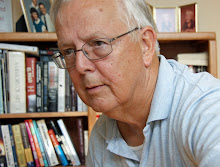Memories
by Bob Sanchez
Denise and Ronald
sat at their favorite table at The Golden Sunset, waiting in the dining room
for lunch. Ronald had removed two chairs to discourage further company. Someone had been pounding out “Roll Out the Barrel” on the piano across
the hall but stopped in the middle of the tune; a few minutes later, two EMTs
carried the pianist away on a stretcher. More residents arrived in the dining
room using canes and wheelchairs. The place smelled like meatloaf with a whiff of
Lysol. Silverware clattered on plates. Lupe the lunch lady delivered two
plates with identical meals with whipped potatoes, green beans, lime Jell-o,
and a heap of something from the animal kingdom that was blanketed in brown gravy.
“It’s come to this,” Denise said. “We used to
eat Shrimp Étoufée at Arnaud’s and drink Hurricanes in those huge glasses, and
then stagger back to our hotel—and oh my, could we ever sin! And now look at
this slop. No shape, no color, no taste. They’re trying to bore us to death.
Numb us before they put us on that ice floe to be eaten by polar bears.”
Ronald smiled,
though he had forgotten about Arnaud’s and the sin. What kind of sin? And who
was Flo? He touched her wrinkled hand, mottled with age spots. “Yes,” he said,
“it’s come to this. You and me together again, the way Fate intended.”
She tasted the
potatoes and pushed the plate aside. “Salt-free food. Ugh. I’m going on a
hunger strike as of now. Will you come with me, Ronald?”
“I will go
anywhere with you.” Her eyes were pale blue, and her face was truly lovely
because of the wrinkles, he thought, not despite them. “Off the edge of the
earth, if we can hold hands doing it.”
“You’re an old
romantic fool, talking such drivel. I just want you to boycott this place with
me. Tomorrow we’ll sneak out for burgers and the saltiest fries we can find.”
She tapped the cube of Jell-o with her knife to watch it wiggle and glisten in
the fluorescent light. Ronald thought of emeralds and shamrocks, fragments of
memories he couldn’t piece together.
“Yes, tomorrow.”
He ate a forkful of whipped potatoes. A dab of it stuck to his chin. “These
spuds are good, don’t you think?”
She asked, “Do you
remember when our oldest finally tied the knot? It lasted six months, as I
recall. Children know nothing of commitment anymore.”
How could Ronald
admit he’d forgotten everything she talked about? Their lives together must
have been filled with such passion. Foggy notions drifted about his head that
they’d never been together before Golden Sunset, but she was smart and
beautiful, while he thought himself dumb and ugly. “Yes I do,” he said. “Kids
these days.”
They ate slowly
while he tried to process her memories, as he had so few of his own. In time
the other diners left, and Denise and Ronald found themselves alone except for
the lunchroom staff collecting dishes and cleaning tables and speaking to each
other in Spanish.
Then he stood up,
his knees and back objecting. Grasping his walker with one hand, he reached out
to help her with the other. They walked down the quiet hall, she to Room 142,
he to Room 141. Was she right? Had they ever married and raised children
together? Fought, divorced and met again here?
“I’m in love with
you,” he said as he fumbled for his key.
Denise turned at
looked at him and said, “Of course you are.” Then she went into her room and
closed the door.











